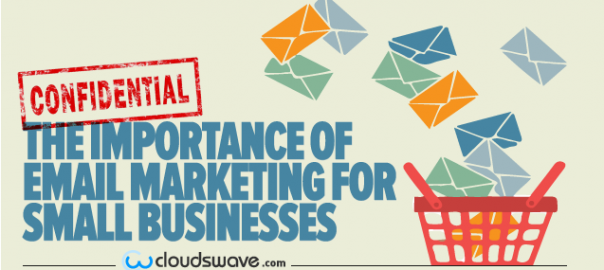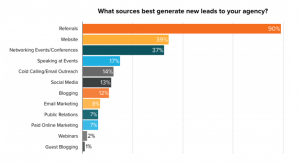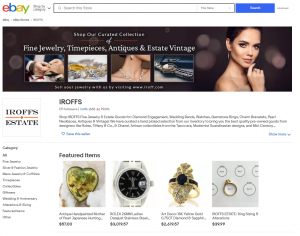
Some people argue that spam or junk mail essentially killed email marketing. Makes sense, if you think about it. Don’t we all hate spam? Even more so, people are proclaiming that with the ever-increasing popularity of social media and enterprise social networks is the impending obsolescence of email.
Well, I’ve got news for you. Email is alive and well, and email marketing will continue to gain traction as marketing shifts from globalization to personalization.
Why email marketing is worth your time ?
In an interview, Keith Burton, a Brunswick Group partner, insists that internal communication is still “heavily email and memo-based in virtually all companies,” a phenomenon he suspects will remain for another two to three generations of managers, or until the “millennial generation ascend to new leadership levels.”
While Yammer and Slack are out there to upset the stature enjoyed by email in corporate communication and new business acquisition, the following stats, as shared in this infographic, prove that email is here to stay:
- In April 2012 alone, the number of email accounts worldwide already reached 3.3 billion.
- In 2010, approximately 107 trillion emails were sent.
- As per April 2011, 8 out of 10 smartphone users checked and sent emails with their devices.
- According to the Direct Marketing Association (DMA), the ROI of email marketing in 2011 was $ 40 for every $ 1 invested.
In another infographic, published by Litmus Software in 2013, it was noted that:
- 91% of consumers use email at least once a day, according to an ExactTarget 2012 Channel Preference survey.
- Email has higher click-through rates and ROI than other channels, as per Mediapost.com.
- More than search and social combined, email has higher conversion rates per session, according to a report by Monetate.
As to why marketers should invest in email marketing, Copyblogger has this to say:
“Because it moves the conversation about your business to a more personal environment – the inbox.”
Now, here are some of the reasons why email marketing works:
1. Data-driven and measurable

With the use of email marketing software or services, statistics such as delivery, open, click, bounce, and unsubscribe rates are tracked and monitored, so you know exactly how certain campaigns perform. This way, you can make adjustments as needed, improving your email marketing effectiveness in the process.
2. Allows targeting

With email marketing, customer targeting can be implemented through lead scoring, which is a classification methodology used to rank prospects against certain criteria. You can’t assume that everyone in your list is ready, emotionally or otherwise, to make a purchase. There are those that are still in the “interested” phase, and you can’t send them sales pitches straightaway, particularly if what they’re looking for is information to help them with decision-making functions.
List segmentation can also be used for split tests to understand how certain groups of people respond to particular campaigns.
3. Builds relationships

Establishing consumer trust and loyalty in a brand takes time. Email marketing allows you to build relationships with prospects, leads, and past and current customers by directly speaking to them about your brand via their inbox. No need to worry about invading their personal space because they can always check your emails at a time most convenient for them. You can introduce them to new products or services, send them newsletters, information about events in their area, discount vouchers, and so on.
If you’re personable and every email you send makes them feel important, your email marketing campaigns should fetch significant returns.
4. Permission-based

Email marketing normally employs a “double opt-in” protocol where people who subscribe to your mailing list need to click on a link sent to their email addresses to confirm their subscription, the exact opposite of email spamming where adverts and other forms of communication are sent without the receiver’s prior consent.
Then again, just because you have their permission doesn’t mean you can send them just about anything under the sun. Every email you send out to your list must be well-thought-out, as the moment you piss them off, the Unsubscribe button is just a click away.
5. Cost-effective

When you start your email marketing campaign, naturally, there are upfront costs to consider: email marketing software, copywriting, template design, images, list growth services, and reporting. But once the foundation is set up, the maintenance costs are minimal versus the ROI. Remember that ROI figure posted at the beginning of this article? According to the DMA, in 2011, email marketing returned $ 40 for every dollar spent.
6. Outperforms social media

McKinsey and Company, in a recent study, explains that email surpasses social media’s conversion rate by 40X. In a 2013 article by Wired quoting Custora, a marketing data firm, email ranked next to organic search and CPC in terms of customer lifetime value by channel at +12% compared to Facebook’s 1% and Twitter’s -23%, as online retailers quadrupled their customer acquisition rates through email to approximately 7%.
Of course, this isn’t to say that social media is no longer a valuable marketing channel. It still is, but it pays to remember that email marketing definitely has its uses and can be used in conjunction with other marketing methods like social media marketing, video marketing, content marketing, and so on.
Digital & Social Articles on Business 2 Community
(356)






